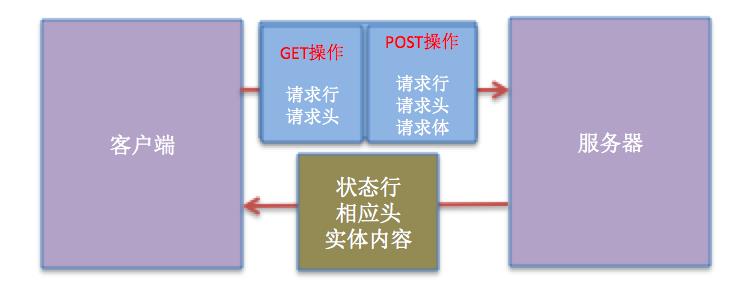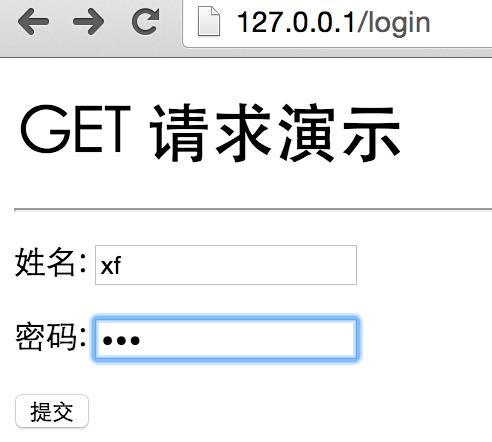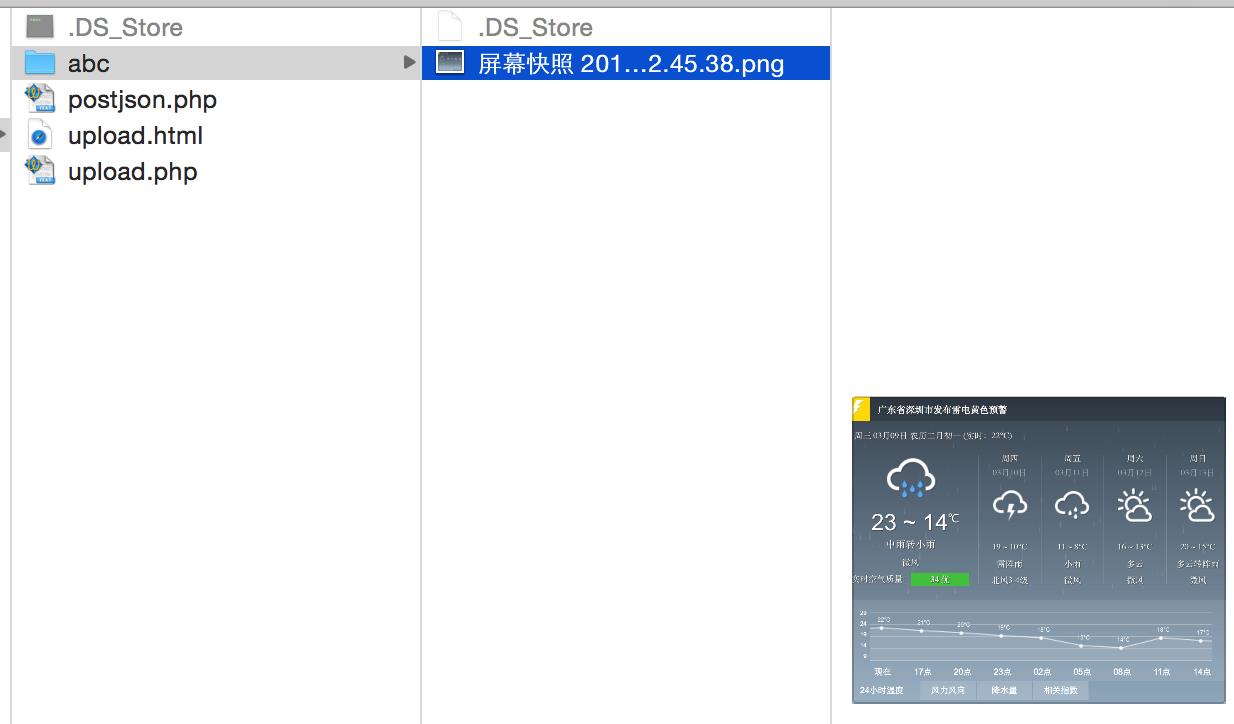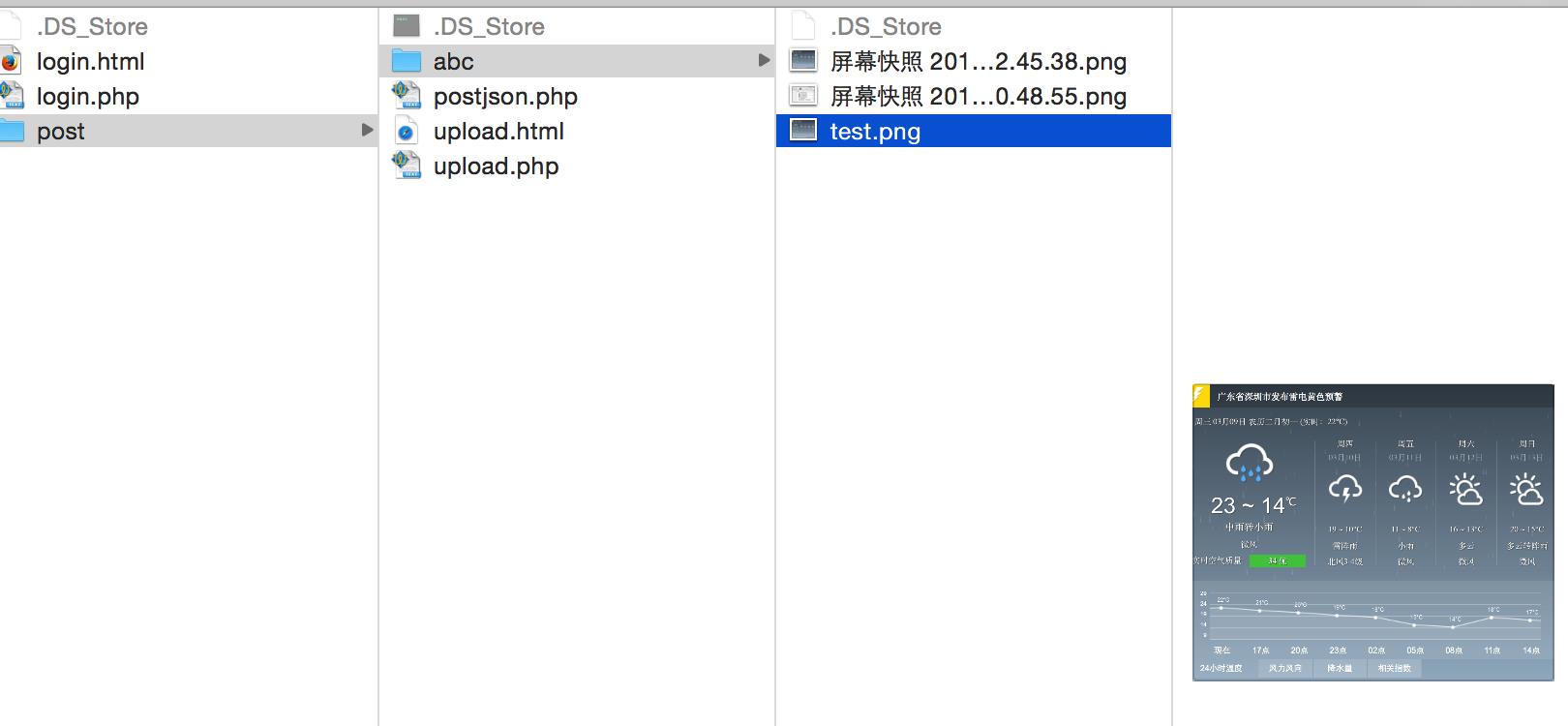[New learn] 网络基础-网络操作
Posted
tags:
篇首语:本文由小常识网(cha138.com)小编为大家整理,主要介绍了[New learn] 网络基础-网络操作相关的知识,希望对你有一定的参考价值。
代码:https://github.com/xufeng79x/NETOperation
1.简介
主要记录基本的网络操作步骤,get/post关系和区别和文件上传实现。
2.准备
需要服务器端,如果你没有完成服务器端的操作请参考[New learn] 网络基础-apache本地服务搭建(支持php)
3.网络基本操作
3.1.基本操作步骤
//step_1:创建URL
//step_2:创建request
//step_3:建立连接接受返回数据
//step_4:反序列化数据
举例:如下我们将按照此步骤从网络上下载图片显示在UI上。
-(void)touchesBegan:(NSSet<UITouch *> *)touches withEvent:(UIEvent *)event { [self downloadFile]; } -(void)downloadFile { NSOperationQueue *queue = [[NSOperationQueue alloc]init]; [queue addOperationWithBlock:^{ //step_1:创建URL NSString *urlStr = @"http://imgsrc.baidu.com/forum/pic/item/645b8701a18b87d6e716e197070828381e30fdae.jpg"; NSURL *url = [NSURL URLWithString:urlStr]; //step_2:创建request NSMutableURLRequest *request = [NSMutableURLRequest requestWithURL:url cachePolicy:0 timeoutInterval:2.0f]; //step_3:建立连接接受返回数据 [NSURLConnection sendAsynchronousRequest:request queue:[NSOperationQueue mainQueue] completionHandler:^(NSURLResponse *response, NSData *data, NSError *connectionError) { // step_4:反序列化数据 UIImage *image = [[UIImage alloc]initWithData:data]; // 设定UI显示 self.imageView.image = image; }]; }]; }
结果:

说明:这里只是快速演示了一个网络请求的过程,无论后续讲到的get、post该是文件上传等都不脱离这个大的过程,无非是细节的不同罢了。
3.2 网络操作过程原理
一般网络请求方式分为多种,但是我们最常用的只有GET和POST两种(默认为GET),这两者的区别和使用场景及原理本文后续会涉及。
客户端与服务端的通信原理如下图:

上图中,GET操作是没有请求体的,那的所有参数都放在了URL(请求行)中,而对于POST操作则没有URL参数这个说法而是将所有的参数(包括文件的二进制内容)都放在请求体中。
GET
例如我们访问:http://127.0.0.1/login 在GET 请求演示中输入正确的用户名和密码:xf/ios

点击URL后在地址栏中出现了我们输入的内容:
![]()
请求行与请求头:

上述红框中的为请求行,它指明了协议,方式(GET)和URL。其余部分为请求头
对于相应部分可以自行测试观察。
总结:我们可以看到GET方式它的参数都是在URL中显式指定的,对于用户名和密码这个场景来说显然就不适合了。这样的场景下我们可以POST方式更为妥当。
POST
例如我们访问:http://127.0.0.1/login 在POST 请求演示中输入正确的用户名和密码:xf/ios

点击URL后在地址栏中并没有出现用户名和密码:
![]()
请求行与请求头:

上述红框中的为请求行,它指明了协议,方式(GET)和URL。其余部分为请求头
对于相应部分可以自行测试观察。
请求体:

总结:我们可以看到POST方式指定的,用户名和密码不会出现在URL中,然是被包装进了请求体中,同时这些用户信息也不会被服务器端的日志所记录。
3.3 网络操作过程代码实现
进过上述过程已经对网络的原理有了简单地认识,并且我们也通过浏览器进行了两种方式的操作,而使用代码来实现无非是借助于框架的API来模拟还原这个过程。
GET
代码:
- (void)getLogin { // step_1:创建URL NSString *username = @"xf"; NSString *pwd = @"ios"; NSString *urlString = [NSString stringWithFormat:@"http://127.0.0.1/login.php?username=%@&password=%@",username, pwd]; NSURL *url = [NSURL URLWithString:urlString]; // step_2:创建request NSURLRequest *request = [NSURLRequest requestWithURL:url cachePolicy:1 timeoutInterval:2.0f]; // step_3:建立连接接受返回数据 [NSURLConnection sendAsynchronousRequest:request queue:[NSOperationQueue mainQueue] completionHandler:^(NSURLResponse *response, NSData *data, NSError *connectionError) { // 反序列化 id result = [NSJSONSerialization JSONObjectWithData:data options:0 error:NULL]; NSLog(@"%@", result); }]; }
结果:可以看到与浏览器返回的数据是一致的。
2016-03-15 15:52:59.779 NetOperation[1594:117149] { userId = 1; userName = xufeng; }
总结:GET操作的时候无非就是去将参数拼接进URL,通过这个URL去获取数据
POST
代码:
- (void)postLogin { // step_1:创建URL NSString *urlString = @"http://127.0.0.1/login.php"; NSURL *url = [NSURL URLWithString:urlString]; // step_2:创建request NSMutableURLRequest *request = [NSMutableURLRequest requestWithURL:url cachePolicy:1 timeoutInterval:2.0f]; // 2.1 指定http的访问方法,服务器短才知道如何访问 request.HTTPMethod = @"POST"; // 2.2 指定数据体,数据体的内容可以从firebug里面直接拷贝 NSString *username = @"xf"; NSString *pwd = @"ios"; NSString *bobyStr = [NSString stringWithFormat:@"username=%@&password=%@", username, pwd]; // 2.2.1 跟服务器的交互,全部传递的二进制 request.HTTPBody = [bobyStr dataUsingEncoding:NSUTF8StringEncoding]; // step_3:建立连接接受返回数据 [NSURLConnection sendAsynchronousRequest:request queue:[NSOperationQueue mainQueue] completionHandler:^(NSURLResponse *response, NSData *data, NSError *connectionError) { // 反序列化 id result = [NSJSONSerialization JSONObjectWithData:data options:0 error:NULL]; NSLog(@"%@", result); }]; }
结果:可以看到与浏览器返回的数据是一致的。
2016-03-15 15:58:28.645 NetOperation[1633:120687] { userId = 1; userName = xufeng; }
总结:与GET不同的是
1)使用NSMutableURLRequest类来申明请求,因为后续需要设置此request。
2)需要显式的设定reguest为POST
3)参数不会拼接到URL而是使用以二进制数据的形式设定到request的请求体中。
4.网络高级操作--文件上传
前提:保证服务器端目标文件夹为可读写。
与之前过程一样,我们先进行浏览器的操作然后在使用代码来模拟实现。
打开http://127.0.0.1/post/upload.html

选择文件上传并观察网络请求:
我们可以看到文件已经被成功上传到服务器:

对应的请求行和请求行如下:
POST /post/upload.php HTTP/1.1 Host: 127.0.0.1 Connection: keep-alive Content-Length: 221558 Cache-Control: max-age=0 Accept: text/html,application/xhtml+xml,application/xml;q=0.9,image/webp,*/*;q=0.8 Origin: http://127.0.0.1 Upgrade-Insecure-Requests: 1 User-Agent: Mozilla/5.0 (Macintosh; Intel Mac OS X 10_10_5) AppleWebKit/537.36 (KHTML, like Gecko) Chrome/47.0.2526.80 Safari/537.36 Content-Type: multipart/form-data; boundary=----WebKitFormBoundaryOKUHB11qxaAPiisz Referer: http://127.0.0.1/post/upload.html Accept-Encoding: gzip, deflate Accept-Language: zh-CN,zh;q=0.8
请求体:

我们现在了解了上传是基于POST方式,按照之前的操作我们需要在代码中来模拟实现。
而在操作步骤中唯一不同的就是对于request的包装,所以上传文件部分给NSMutableURLRequest增加一个分类来生成请求。
代码实现:
#import "NSMutableURLRequest+Multipart.h" /**随便的字符串作为分隔符*/ static NSString *boundary = @"xufeng-test"; @implementation NSMutableURLRequest (Multipart) + (instancetype)requestWithURL:(NSURL *)url andLoaclFilePath:(NSString *)loaclFilePath andFileName:(NSString *)fileName { //step_2:创建request NSMutableURLRequest *request = [NSMutableURLRequest requestWithURL:url cachePolicy:1 timeoutInterval:2.0f]; // 2.1 指定post方法 request.HTTPMethod = @"POST"; // 2.2 拼接数据体 NSMutableData *dataM = [NSMutableData data]; NSString *str = [NSString stringWithFormat:@"\\r\\n--%@\\r\\n", boundary]; [dataM appendData:[str dataUsingEncoding:NSUTF8StringEncoding]]; str = [NSString stringWithFormat:@"Content-Disposition: form-data; name=\\"userfile\\"; filename=\\"%@\\" \\r\\n", fileName]; [dataM appendData:[str dataUsingEncoding:NSUTF8StringEncoding]]; // 这里直接指定为octet-stream,这样可以针对全部的文件格式 str = @"Content-Type: application/octet-stream\\r\\n\\r\\n"; [dataM appendData:[str dataUsingEncoding:NSUTF8StringEncoding]]; // 要上传图片的二进制 [dataM appendData:[NSData dataWithContentsOfFile:loaclFilePath]]; str = [NSString stringWithFormat:@"\\r\\n--%@--\\r\\n", boundary]; [dataM appendData:[str dataUsingEncoding:NSUTF8StringEncoding]]; // 2.3 设置请求体 request.HTTPBody = dataM; // 2.4 设置请求头 NSString *headerStr = [NSString stringWithFormat:@"multipart/form-data; boundary=%@", boundary]; [request setValue:headerStr forHTTPHeaderField:@"Content-Type"]; return request; }
调用:
- (void)postUpLoadFile { // 1. 创建URL NSURL *url = [NSURL URLWithString:@"http://127.0.0.1/post/upload.php"]; // 2. 创建request NSMutableURLRequest *request = [NSMutableURLRequest requestWithURL:url andLoaclFilePath:[[NSBundle mainBundle] pathForResource:@"test.png" ofType:nil] andFileName:@"test.png"]; // 3. 建立连接接受返回数据 [NSURLConnection sendAsynchronousRequest:request queue:[NSOperationQueue mainQueue] completionHandler:^(NSURLResponse *response, NSData *data, NSError *connectionError) { // 4. 反序列化数据 id result = [NSJSONSerialization JSONObjectWithData:data options:0 error:NULL]; NSLog(@"result = %@", result); }]; }
结果:
2016-03-15 17:15:38.472 NetOperation[1878:154238] result = { userfile = { error = 0; name = "test.png"; size = 221340; "tmp_name" = "/private/var/tmp/phpUWTlJ2"; type = "application/octet-stream"; }; }
查看服务器文件夹,已经正确上传:

完毕。
以上是关于[New learn] 网络基础-网络操作的主要内容,如果未能解决你的问题,请参考以下文章